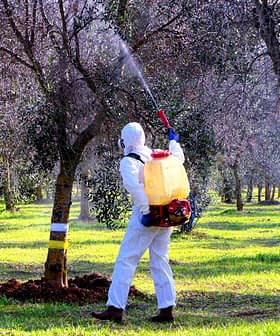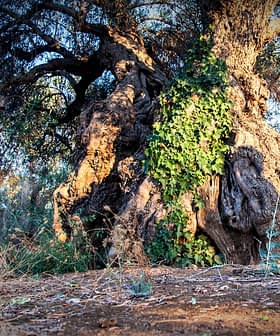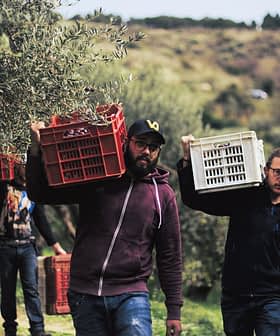Xylella Marches On: Lethal Olive Disease Discovered in Central Spain
Xylella fastidiosa continues to kill many tens of thousands of olive trees in south Italy's Puglia region and is on track to widen its deadly clasp across the Mediterranean basin.
 Olive tree near Oria, felled due to an outbreak of Xylella fastidiosa. (Photo by Cain Burdeau)
Olive tree near Oria, felled due to an outbreak of Xylella fastidiosa. (Photo by Cain Burdeau)Xylella fastidiosa, a plant bacterium native to Central America, is continuing to kill olive trees in Italy and is spreading across the Mediterranean basin, with reports of infected trees in Spain and France. The bacterium, which was introduced into Europe via tropical plants from Central America, has the potential to devastate olive-producing regions in Italy and beyond, leading to a drop in olive oil production worldwide.
Xylella fastidiosa, a plant bacterium native to Central America that causes serious, often lethal, plant diseases continues to kill tens of thousands of olive trees in south Italy’s Puglia region and it is also on track to widen its deadly clasp across the Mediterranean basin.
New reports this spring from Italy and Spain are grim. Spanish authorities this month reported that an olive tree on its mainland has been identified with the bacterium.
Spanish scientists previously had identified the Xylella disease in olive trees on the island of Mallorca, said Alexander Purcell, a Xylella expert at the University of California at Berkeley who has been tracking the disease since the 1970s.
See Also:Xylella World Map
“Subsequently other strains of Xylella fastidiosa were found in all of the other Balearic Islands, indicating that the bacterium must have been independently introduced at least several times,” he said in an email.
The Ministry of Agriculture, Fisheries and Food and Environment told Europa Press, a Spanish news agency, that Xylella had been identified at an estate outside Madrid.
At press time, Spanish ministry officials had not responded to a request for details and comment from Olive Oil Times.
The troubling news isn’t limited to Spain. The bacterium’s progress may be infecting olive trees in France, too.
Earlier this month, Corsica’s chapter of the Interprofessional Union of Oleiculturists declared that olive trees on the French island are infected with Xylella.
In 2015, French officials reported finding Xylella fastidiosa in Corsica and also in ornamental plants in the French Riviera, but that the bacterium had not begun to infect olives, Purcell said.
Back in the epicenter of the crisis, Italy’s region of Puglia, the number of infected trees continues to grow.
On April 4, Italy’s state news agency, ANSA, reported a quadrupling of infected trees in a critical containment zone north of the flatland of the Salento where Xylella first made its deadly impact, laying waste to extensive tracts of olive groves.
Springtime is a critical period to combat and monitor Xylella. These are the months when the bacterium grows in the main insect vector — the native spittlebug — and develops on weeds, Purcell said.
Eliminating weeds or using insecticides can prevent the maturing of spittlebugs into adults, the stage at which they fly and carry the bacterium to other trees.
Puglia, as has become customary, is again the scene of olive tree destruction. Crews are cutting down even more olive trees.
The containment zone, for now, encompasses an area known as the Valle d’Itria, a lush agricultural region famous for its ancient stone structures, the trulli.
The bacterium has the potential to spread from the Valle d’Itria into the Piana degli Olivi Millenari, an extensive coastal plain and home to some of the oldest olive trees in Puglia. The concern is that its devastating path will continue to march through Italy and into other olive-producing regions of the Boot and further afield.
Xylella was introduced into Europe via tropical plants brought from Central America. Investigators believe the bacterium was spread through Holland’s flower markets and wound up flourishing in olives near Gallipolli, a port town in the Salento region.
Xylella has been blamed for attacking citrus and coffee in Brazil, grape and Asian pear in Taiwan and grape, almond, and alfalfa crops in California, Purcell said.
The outbreak of Xylella contributed last year to a worldwide drop in olive oil production, according to the International Olive Council.









